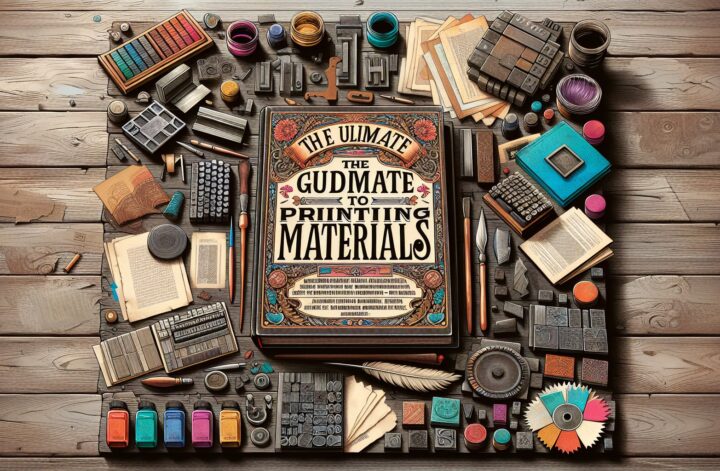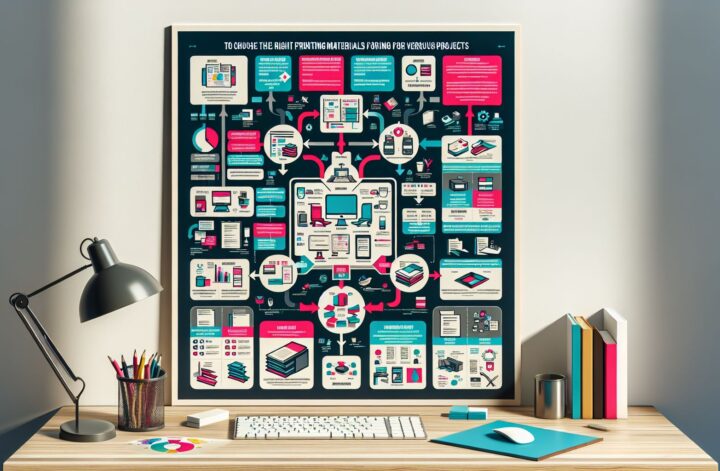Printed materials are the backbone of various industries, from advertising and marketing to publishing and packaging. The choice of materials for printing plays a pivotal role in determining the overall quality, durability, and visual appeal of the final product. With a plethora of options available, selecting the right printing materials can be overwhelming. In this comprehensive guide, we will explore different types of printing materials, their uses, advantages, and limitations. Whether you are a business owner, graphic designer, or simply someone interested in the world of printing, this article will equip you with the knowledge needed to make informed decisions about printing materials.
Introduction to Printing Materials
Printing materials can be broadly classified into two categories: paper and non-paper materials. Paper, the more traditional option, continues to dominate the printing industry. However, with advancements in technology, non-paper materials have gained popularity. These materials offer unique advantages such as durability, flexibility, and resistance to environmental factors. Let’s dive into the details of each category and explore their variants.
Paper Materials
1. Coated Paper
Coated paper is a widely used material due to its smooth, glossy surface. It is often preferred for printing high-quality images, brochures, catalogues, and magazines. The coating, typically made of clay and other substances, prevents ink absorption, resulting in sharp and vibrant prints. Coated paper is available in various finishes such as gloss, matte, and satin, each offering a distinct visual effect.
2. Uncoated Paper
Uncoated paper, as the name suggests, does not have a coating on its surface. It offers a natural and tactile feel, making it suitable for materials that require written content or a classic aesthetic. Uncoated paper is commonly used for letterheads, envelopes, notepads, and book interiors. It is also eco-friendly since it is easily recyclable.
3. Specialty Paper
Specialty paper refers to a wide range of papers designed for specific purposes. These include textured paper, metallic paper, translucent paper, and handmade paper, among others. Textured paper provides a unique tactile experience, while metallic paper adds a touch of elegance and shimmer. Translucent paper is commonly used in applications where a translucent effect is desired, such as wedding invitations or creative overlays. Handmade paper, made using traditional techniques, showcases a luxurious and rustic appeal.
Non-Paper Materials
1. Vinyl
Vinyl, a flexible and durable material, is commonly used for large-scale printing applications such as banners, signage, and vehicle wraps. It is weather-resistant and can withstand exposure to outdoor elements. Vinyl printing is highly popular in marketing and advertising campaigns due to its vibrant colors and long-lasting nature. Additionally, vinyl is easy to install and remove, making it a preferred choice for temporary displays.
2. Polyester
Polyester is a synthetic material known for its durability and resistance to tearing, shrinking, and wrinkling. It is commonly used for various printing applications such as banners, flags, backdrops, and trade show displays. Polyester prints offer excellent color vibrancy and sharpness, making them an eye-catching choice for promotional materials. Additionally, polyester is relatively lightweight, making it easy to transport and install.
3. Acrylic
Acrylic, a transparent thermoplastic, is widely used for printing applications that require a glossy and professional look. It is often used for printing signs, displays, and plaques. Acrylic prints offer vibrant colors and excellent UV resistance, ensuring long-lasting prints. Moreover, acrylic is lightweight, shatter-resistant, and easy to maintain, making it a versatile choice for both indoor and outdoor applications.
Factors to Consider When Choosing Printing Materials
Selecting the appropriate printing materials involves evaluating various factors based on your specific requirements. Here are some key considerations to keep in mind:
1. Print Quality
The desired print quality plays a crucial role in determining the choice of materials. For high-definition images, coated papers or non-paper materials like polyester and acrylic are recommended. If the print requires written content or a classic feel, uncoated paper might be the ideal choice.
2. Durability
Consider the expected lifespan and durability of the final printed product. If the prints are intended for outdoor use or need to withstand frequent handling, opting for non-paper materials like vinyl or polyester would be a wise decision. For short-lived materials or indoor applications, paper options can be more cost-effective.
3. Environmental Impact
If environmental sustainability is a priority, choosing recyclable or eco-friendly options is essential. Uncoated paper and certain non-paper materials like polyester can be environmentally friendly choices. Additionally, selecting materials with eco-label certifications, such as Forest Stewardship Council (FSC) certification, ensures responsible sourcing and production practices.
4. Budget
Printing materials come at different price points, ranging from economical to premium. Consider your budget constraints while evaluating your options. Paper materials, especially uncoated options, are generally more affordable, while non-paper materials tend to be priced higher due to their specialized properties.
5. Application
The intended application of the printed materials is a crucial factor to consider. Banners, signs, and vehicle wraps require durability and weather resistance, making vinyl or polyester suitable choices. On the other hand, brochures, catalogues, and business cards benefit from high-quality coated or uncoated paper.
Conclusion
Selecting the right printing materials is a vital step in ensuring the success of any print project. Whether it’s paper or non-paper materials, each option brings unique properties and advantages. By understanding the different types of printing materials, their characteristics, and the factors influencing their selection, you can make informed decisions aligned with your specific requirements. Consider the desired print quality, durability, environmental impact, budget, and application when choosing the perfect materials for your next printing venture. Remember, the right choice of printing materials can significantly enhance the overall appeal and longevity of your prints.



